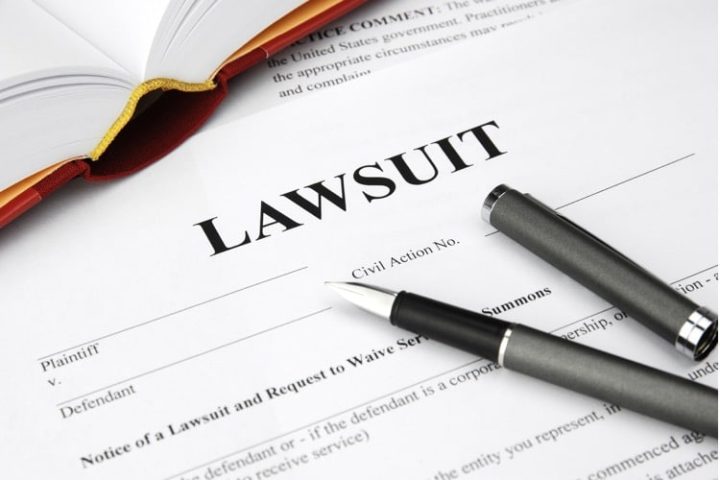
In an 87-page report released on January 5, Kenosha County District Attorney Michael Graveley concluded that Officer Rusten Sheskey was justified in shooting Jacob Blake seven times when he fought with police on August 23, 2020.
But that conclusion, reached with the help of analysis from a former Obama administration official, is erroneous, Blake claims in a lawsuit filed against Sheskey.
Sheskey, Blake argues, deprived him of his rights and caused a permanent injury. Left paralyzed from the waist down, Blake seeks a jury trial and unspecified damages.
Problem is, Blake’s attorney, Ben Crump, the shakedown artist who involved himself in the justified shooting of thugs Trayvon Martin and Michael Brown, omitted two crucial facts from his lawsuit. First, again, the shooting was justified. Second, Blake was a sex-assault suspect with an outstanding warrant and subject to immediate arrest.
The Lawsuit
The lawsuit depicts an innocent man whose saintly qualities almost, but not quite, approach those of George Floyd.
Blake, the lawsuit alleges, was at Laquisha Booker’s home to “celebrate his son’s eighth birthday.” But “following a verbal dispute between Booker and a female neighbor, Plaintiff BLAKE chose to leave the area with two of his sons to avoid the confrontation between the two women.”
Booker called the cops to say that she allowed him to come to the residence, but then again, that he “wasn’t supposed to be there.”
Sheskey and his fellow officers arrived within three minutes, as Blake was putting one of his kids into Booker’s SUV, which he did not have permission to use.
605d24b66733e.pdfNeither Sheskey nor the officers announced “any intention to arrest Plaintiff BLAKE,” the lawsuit alleges, “and in the absence of any verbal command to place his hands behind his back to be handcuffed, Defendant SHESKEY grabbed Plaintiff BLAKE by the wrist and began to apply physical force to his arm as he was in the process of placing one of his sons into the back of the SUV.”
After that, the cops beat down an innocent black man for no reason, the lawsuit alleges:
Believing he was about to be attacked by the police, Plaintiff BLAKE tensed up his arm and attempted to maintain his balance by putting his hands on top of the car.
Immediately, Defendant SHESKEY and other officers began to physically attack Plaintiff BLAKE by placing Plaintiff BLAKE in a headlock, punching and choking him, and shocking him with a taser on three occasions.
But Blake continued resisting, the lawsuit admits. He “struggled to his feet” and “retrieved a folding utility knife off the ground that he had previously dropped.”
The lawsuit describes Blake quickly walking around the front of the vehicle to the driver’s side with the knife, but says Blake never threatened or tried to strike or escape the officers.
After that, as Blake tried to get in the SUV, Sheskey simply shot him seven times for no reason, which endangered the children in the back seat of the SUV.
The lawsuit dramatically describes the hollow-point rounds with which Blake was shot. They caused “catastrophic injury and paralysis,” the lawsuit alleges:
At least one round fired by Defendant SHESKEY ripped through the spinal column of Plaintiff BLAKE, severing his spinal cord.
The lawsuit alleges that Sheskey violated Blake’s Fourth Amendment rights that protect him “against the use of excessive and deadly force without cause or justification,” and that
Sheskey acted with “malice, willfulness, and reckless indifference to the rights of Plaintiff BLAKE.”
The Truth
The video, though, is clear enough. Armed with a knife, Blake resisted arrest and tried to flee. He refused repeated commands to drop the knife, and tried to get in a car to leave the scene after being tased. He was a dangerous, violent man attempting to flee police. That’s why Sheskey shot him seven times.
The report from Graveley, the county prosecutor, shows that Crump’s version is, one might say, somewhat skewed.
When Sheskey and the other officers tried to subdue Blake, Graveley wrote, they were responding to the scene of a domestic dispute. They often become violent. The cops knew Blake was wanted for felony sex assault, his report says:
Every decision the officers made during this incident, in response to this call, must be interpreted in light of those facts.…
They were attempting to arrest Jacob Blake because he had a felony arrest warrant…. Jacob Blake was armed with a knife and, after vigorously resisting the lawful arrest, he appeared to be attempting to flee in a vehicle that police had been told he did not have permission to operate and which had at least one child in the back. All of the decisions made by the officers on scene, particularly Officer Sheskey, were made based on these facts.
In deciding not to charge the officers, Graveley cited Noble Wray, a former police chief and Obama administration official.
His evaluation of the shooting noted that the officers tried “every intervention option,” Graveley wrote, before using deadly force. After they tased Blake, he “took the extreme step of twice ripping out the taser probes and wires.”
Yet even with that, and the knife, “none of the officers fired a shot,” Graveley wrote:
All three officers, after drawing their firearms, created distance from Jacob Blake. Consistent with their training they created this distance to give themselves options, the chance to attempt a dialogue with the armed person and possibly deescalate the situation. Still, Jacob Blake did not submit to their lawful efforts to arrest him or to their orders to drop the knife.
With knife still in hand he walked around the front of the SUV towards the driver’s door closely followed by Officer Sheskey and Officer Arenas who both had their firearms pointed towards him.
As a result of Jacob Blake’s actions, Officer Sheskey was confronted with a choice. In the context of a domestic disturbance, would he allow an armed man with a felony warrant who had just forcefully resisted arrest the opportunity to flee in a vehicle he did not have permission to operate with at least one child in the back? Officer Sheskey decided he had no choice but to physically re-engage with Jacob Blake in an effort to prevent that. Noble Wray found Officer Sheskey’s analysis reasonable, and I agree.
As well, Graveley wrote, Wray concluded that the use of force “was justified, in keeping with Wisconsin Law, in keeping with the Kenosha Police Department’s use of force training and policy, and widely accepted law enforcement use of force standards.”
Charging the police, Graveley, wrote, would be unethical.
Blake pleaded guilty to domestic abuse in November. The sex-assault charge was dismissed.
Blake PleaH/T: Kenosha News



